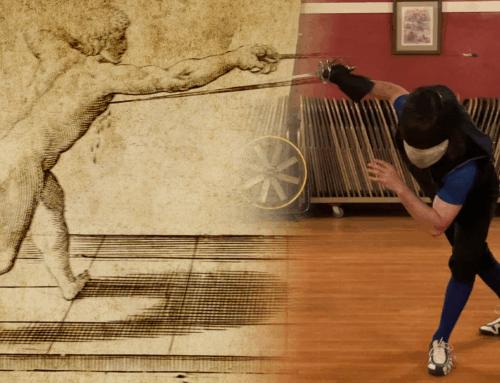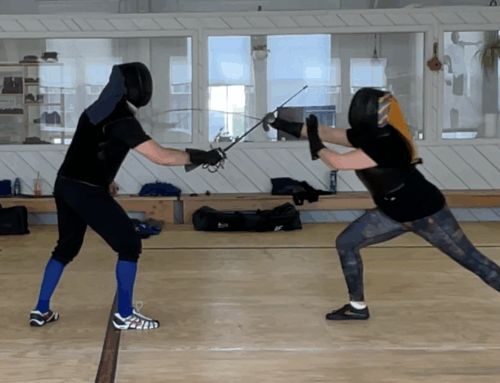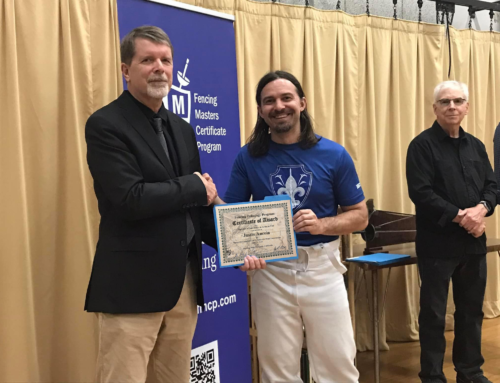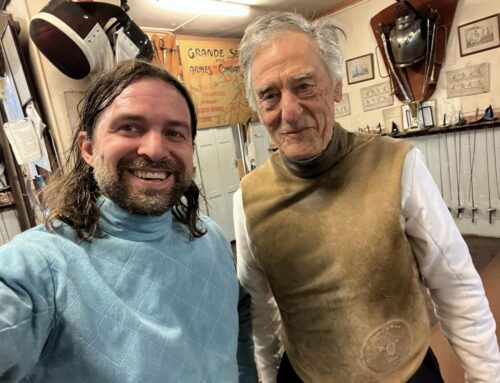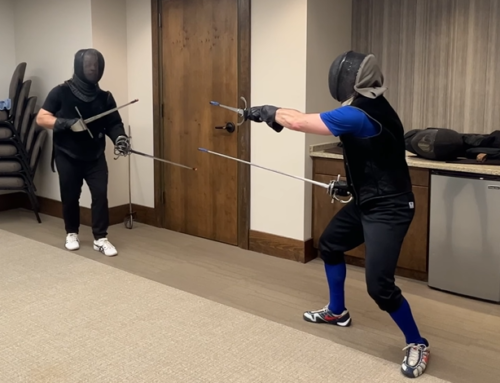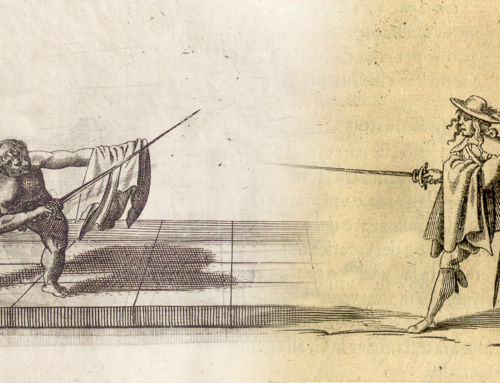Been a while since I’ve updated this. I’ve put Capoferro on hold (for now) to give Francesco Ferdiando Alfieri a read. A new translation edition of his fencing treatise La Scherma came out over the fall. You can snag a copy over on Amazon if you want to follow along.
Since La Scherma was originally printed in 1640, it’s closer to my SCA persona’s period (1630s). Post-period, but a lot of rapier manuals we use in the SCA are. *Shrugs*
I’ll eventually dig into Book 1, which is more the theory and philosophy stuff. But I want to dive right into Book 2, which has the sexy “How to Actually Kill a Swordbro” plates.
Let’s dig in to the first plate & plays.
Chapter VI is entitled “On Wounding In Quarta From a Firm Foot” and starts off with your pretty basic Rapier 101 plays.
For quick reference: quarta is a guard used to protect & attack your inside line and a firm foot is a lunge.
Play 1
The plate/play begins with two fencers — Gentleman 10 & Gentleman 11. Gentleman 11, starting out of measure so he’s safe from being hit, approaches Gentleman 10 in guardia mista (means mixed guard, and is a guard position that’s in between terza and quarta). Gentleman 10 stands on guard in terza. Gentleman 11 finds the measure and attacks in tempo, striking in quarta on the inside line.
This is a pretty bread & butter attack. Alfieri notes that this “means of attack is often used in duels” and it’s also common among SCA fencers, especially those who work in an Italian rapier system. It’s the first play I teach new fencers who are dabbling in historical rapier.
Three Other Options
Alfieri is big on lists (he’s like an Early Modern Period Buzzfeed writer), and provides three other ways Gentleman 11 can wound Gentleman 10.
Alt-Play #1. Gentleman 11 can raise his sword to Line A and wound on terza on the outside. [paraphrased from the text]
Here we see one of Alfieri’s major pitfalls — he leaves details out. If Gentleman 11 is approaching in guadia mista (which is an inside line guard), he would need to perform a cavazione (disengage) to get to the outside line to strike in terza. He doesn’t mention performing a disengage, however.
Another interpretation I ran into (via Kron Rapier Study Group) was that Gentleman 11 approaches in a low guadia mista. Alfieri presents three versions of each guard — High, Natural & Low. A low guardia mista would have the sword tip pointed toward the ground instead of at Gentleman 10. In this scenario, Gentleman 10 approaches into measure with the low version of guardia mista, raises his hand to Line A and then strikes in terza.
Both are fine plays, though I think approaching in low guardia mista is more likely. If you approach in a natural version of the guard and have found Gentleman 10’s blade, there’s no point of performing a cavazione to the outside line. You give Gentleman 10 a tempo to strike you instead.
After going through this plate, I tried the low guardia mista version a few times and found that it had relatively good success for it being a “new guard” for me. Sample size is small, but it makes more sense to me.
Alt-Play #2. Gentleman 11 can feint along Line A, then strike Gentleman 10 in the chest along Line B while in seconda and lowering his body. [paraphrased from the text]
Here we see Alfieri leave out more details, specifically WHAT THE HELL IS GENTLEMAN 10 DOING? Based on the text alone, Gentleman 10 is standing still while his bro Gentleman 11 is flapping his blade all over the place before hitting him. But if Gentleman 10 is just standing there, all Gentleman 11 has to do is what the basic play presents — turn his hand into quarta and strike on the inside line.
Instead, we need to fill in some blanks. It’s not ideal, but we’re not giving much choice otherwise.
Alfieri was a Master of Arms at Accademia Delia in Padua, Italy. He praises Fabris & criticizes Capoferro in several spots in his treatise. His plates are also similar to Capoferro & Giganti (with a little Fabris thrown in there). His treatise was written in Italian and he uses similar language as other Italian rapier masters. Because of this, it’s relatively safe to say he fits the broad-stroke version of the Italian Rapier system. So we can turn to what other masters have written & what the common reactions to certain moves in the system to help fill in the blanks.
Let’s break this down with some blanks filled.
- Gentleman 11 approaches like in the other plays, in guardia mista.
- Gentleman 11 feints high along Line A.
- The feint is only going to work if Gentleman 10 is buying what Gentleman 11 is selling and doesn’t use the tempo to throw a counter-attack. So we can assume that Gentleman 10 goes for a parry.
- Gentleman 11 performs a cavazione under the sword of Gentleman 10 to Line B.
- Gentleman 11 turns his hand into seconda to protect his outside line and lowers the body so he’s safely behind his guard.
It’s important to lower the body and remain safely behind the guard. If Gentleman 11 stays above the guard, Gentleman 10 could still throw a lethal shot into Gentleman 11’s face.
Alternatively, Gentleman 11 could close the guard off with his off hand, but Alfieri doesn’t deal much with closed guards in the text. So while that’s a viable tactic in the SCA, we should probably scrap it when looking at Alfieri’s text.
Alt-Play #3. Gentleman 11 could feint along Line A and then cut a riverso to Gentleman 10’s right leg along Line C. [paraphrased from the text]
We’re running into the same issue of lack of details. It seems clear that Gentleman 10 would have to buy the feint (or be really, really bad) for this play to work. So as Gentleman 10 bites on the feint, Gentleman 11 performs a riverso cut (blade moves from Left to Right), along Gentleman 10’s leg.
Extra Bits
After these four plays, Alfieri criticizes those who think a fighter should turn his head away while throwing a blow. He says these “people are deceiving themselves” because it’s much harder to hit what you can’t see, and you can’t react to what your enemy is doing if you’re eyes on trained on them.






